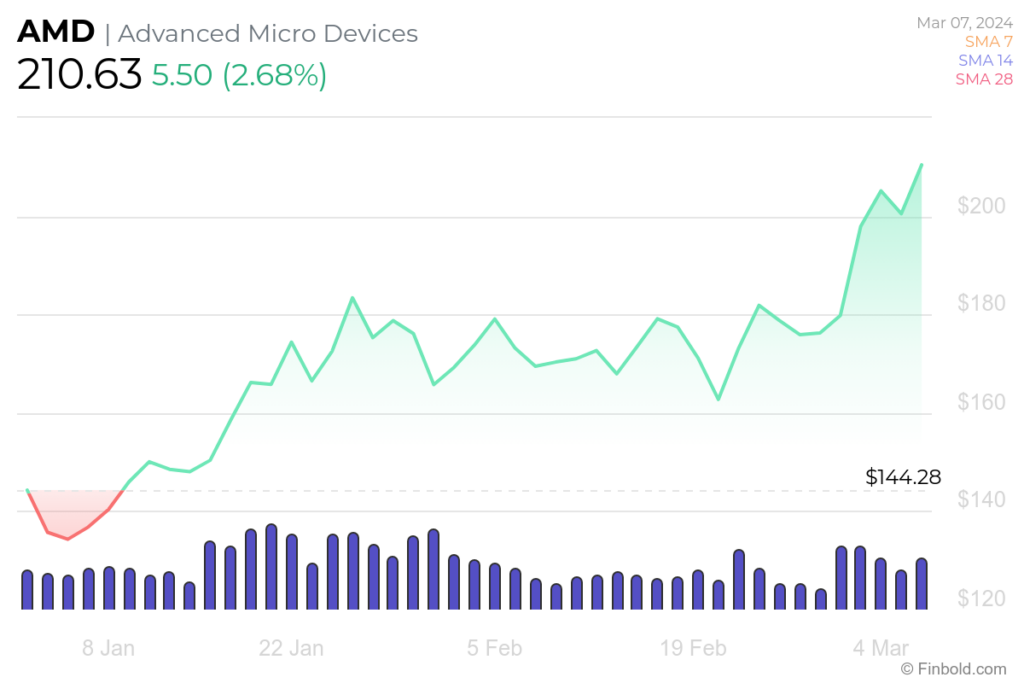As artificial intelligence becomes increasingly integrated into every facet of society and the economy, it’s no surprise that semiconductor stocks are seeing a surge in price and demand. One late bloomer in this trend appears to be Advanced Micro Devices (NASDAQ: AMD), which only recently surpassed the $200 threshold after trading sideways for an extended period.
In its latest earnings report on January 30, 2024, AMD exhibited resilience, slightly exceeding analysts’ expectations with an EPS of $0.77. Quarterly revenue reached $6.17 billion, a 10.2% increase from the previous year.
Despite boasting robust financial fundamentals with a price-to-earnings ratio of 392.2 and a forward P/E of 37.17, AMD is positioned as an aggressive growth stock rather than a value play.
AMD stock price chart
As of the previous close on March 6, AMD stock was trading at $210.63, reflecting a 2.68% gain over 24 hours. Over the last five trading sessions, it surged by 17.02%, contributing to a total increase of 23.22% over the past month.
Since the beginning of 2024, AMD stock has seen an impressive rise, adding 51.99% to its value.

Wall Street AMD stock forecast
According to analysts on TradingView, AMD stock is rated as a ‘buy,’ with a mix of opinions and generally conservative price targets. Of 42 experts, 19 recommended a ‘strong buy,’ 6 suggested a ‘buy,’ 12 advised a ‘hold,’ 2 recommended a ‘sell,’ and three opted for a ‘strong sell.’
The average price target for AMD stock is $199.85, signaling an 18.17% increase from its current level.

Despite recent gains, in a report issued on March 4, Stacy Rasgon from Bernstein maintained a ‘hold’ rating on Advanced Micro Devices stock, setting a price target of $140.
On March 4, analysts from Barclays sent investors a research note with a more optimistic outlook on AMD stock, raising its target price from $200 to $235.
Could US sanctions diminish AMD’s growth?
Advanced Micro Devices faced a challenge from the US government when it tried to sell an artificial intelligence chip tailored for the Chinese market. This setback is part of Washington’s efforts to tighten controls on exporting advanced technologies to China.
AMD had requested approval from the Commerce Department to sell the AI processor to Chinese customers. Although the chip was designed to comply with US export restrictions, it offered lower performance than AMD’s offerings outside China.
It remains to be seen whether these sanctions substantially impact AMD revenue or whether the demand on the homefront will replace it.
Buy stocks now with eToro – trusted and advanced investment platform
Disclaimer: The content on this site should not be considered investment advice. Investing is speculative. When investing, your capital is at risk.








